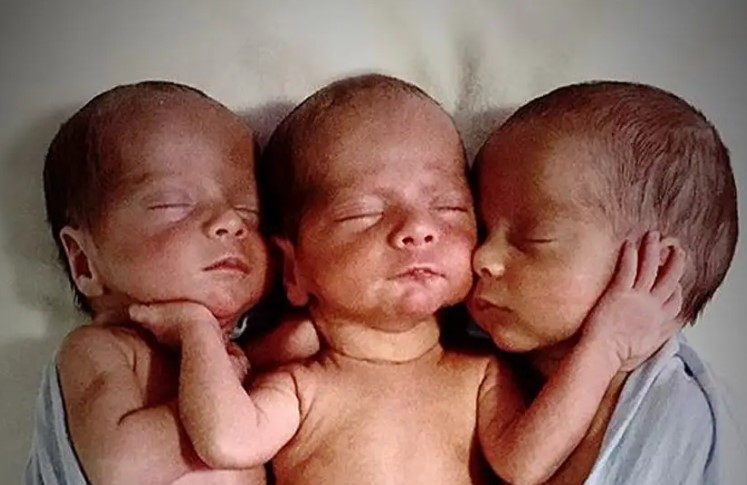It all began with headaches.
When 23-year-old Becki-Jo Allen, a young mother living just outside Liverpool, England, discovered she was expecting again, she thought she knew what to expect. She had already gone through pregnancy once before with her daughter, Indiana. Morning sickness, fatigue, the nervous excitement of waiting for scans—these were all familiar experiences.
But this pregnancy felt different. Her sickness was worse than before, the headaches sharper and more persistent. Her doctors decided to schedule an early ultrasound, just to be safe.
Becki-Jo lay on the table, her heart pounding, as the sonographer moved the probe across her belly. The room was quiet, except for the rhythmic sound of heartbeats—many of them. The technician’s eyes widened.
Finally, the words came:
“You’re having triplets.”
The Shock of a Lifetime
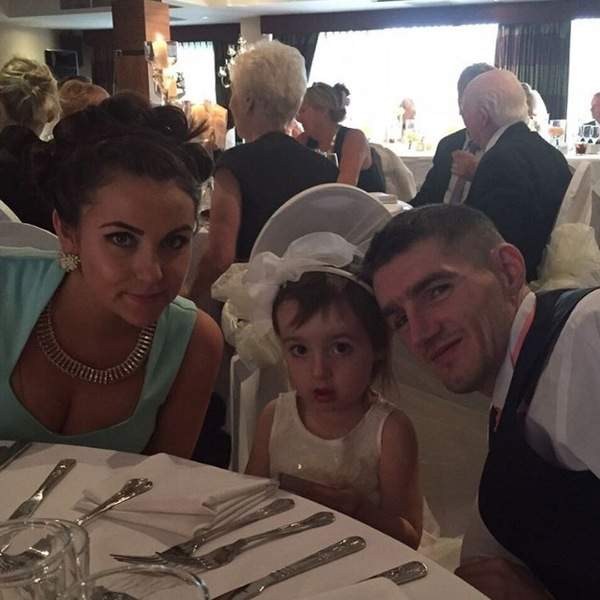
The news stunned Becki-Jo. She and her partner had talked about adding another child to their family, but three at once? That possibility had never crossed their minds.
“It was the biggest shock of my life,” she recalled later. “We haven’t got any triplets in the family, so it came completely out of the blue.”
She walked out of the hospital dazed, clutching the ultrasound photo with three tiny figures lined up in black and white. In that moment, life shifted completely.
A Complicated Journey
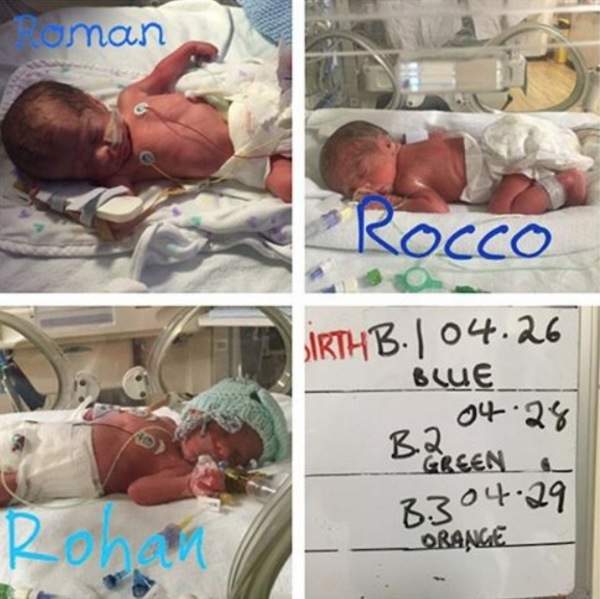
Triplet pregnancies are considered high-risk, and Becki-Jo quickly realized her path to motherhood would not be simple. Every appointment carried new worries—about premature birth, about complications, about whether all three babies would survive.
Friends and family rallied around her, offering encouragement and practical help. But no one could ease the weight of uncertainty.
By 31 weeks, the decision was made: Becki-Jo would deliver by cesarean section. She remembers the room buzzing with doctors and nurses, everyone focused, prepared for the delicate task ahead.
And then, one by one, her three sons entered the world: Rocco, Roman, and Rohan.
Each weighed just over three pounds—tiny but alive. Becki-Jo only glimpsed them briefly before they were whisked away to neonatal intensive care. For six long weeks, she sat by their incubators, watching monitors beep, waiting for the day they would be strong enough to come home.
Three Faces, One DNA
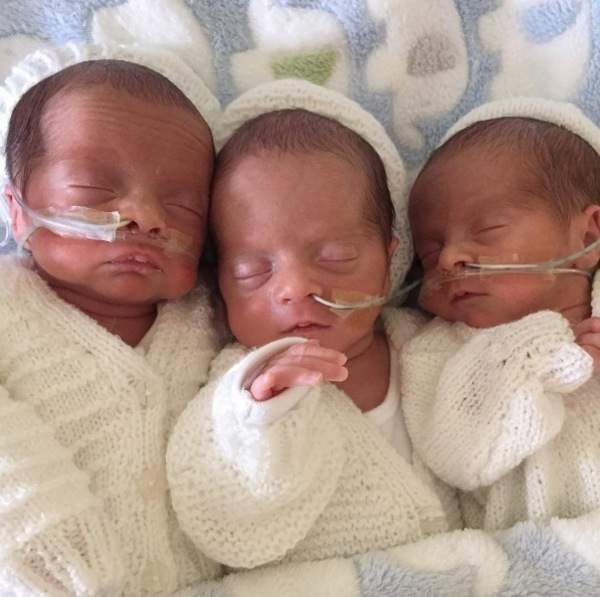
From the beginning, everyone noticed how similar the boys looked. At first, doctors assumed they were fraternal, simply resembling each other more than usual. But visitors couldn’t help pointing out: they were almost impossible to tell apart.
Curious and determined to know for sure, Becki-Jo arranged a private DNA test. When the results came back, they confirmed what her heart already suspected: the three boys were completely identical.
Identical triplets are a medical rarity—so rare that the odds are estimated at one in 200 million. To put it in perspective, it’s more likely to be struck by lightning multiple times than to naturally conceive identical triplets.
Life in Threes
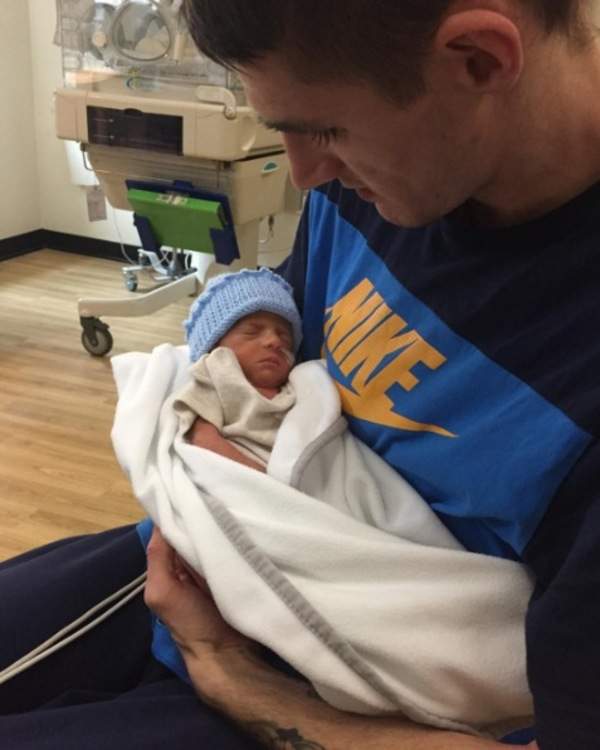
Caring for three infants at once is no small task. Becki-Jo quickly learned that her daily life would be a blur of feeding, changing, and soothing.
The boys went through 130 diapers every week. She stacked empty formula cans like towers in the kitchen. Five packs of wipes disappeared before the week was done. The washing machine never rested.
And yet, amid the exhaustion, there was joy.
“They all have completely different personalities,” she explained. “It’s only when they’re asleep that they look the same to me.”
She pointed out the little quirks that set them apart: Roman’s slightly darker birthmark between his eyebrows, Rohan’s mark on his leg, Rocco’s rounder face. Over time, she learned their cries, their laughter, and their unique ways of showing love.
Indiana, the Proud Big Sister
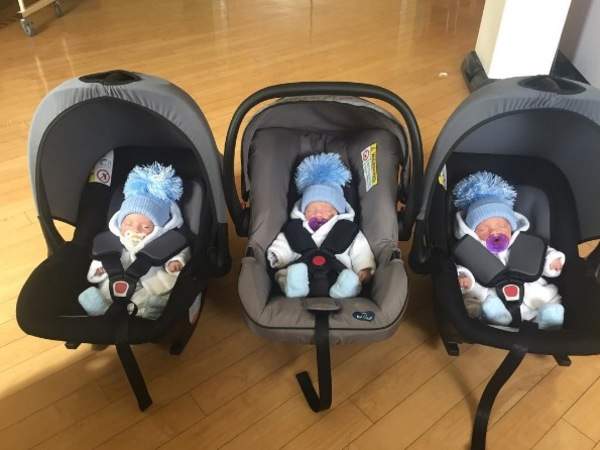
While the triplets demanded constant attention, one little girl quietly embraced her new role with grace: Indiana, Becki-Jo’s six-year-old daughter.
She could have felt overshadowed by the arrival of three brothers. Instead, she blossomed with pride, introducing them to visitors, helping fetch bottles, and watching over them with wide-eyed wonder.
“Indiana loves them,” Becki-Jo said. “She’s not one bit jealous. I do feel a bit sorry for her when I think what it’s going to be like growing up with three little brothers though.”
Indiana’s bond with her siblings proved that love doesn’t divide when families grow—it multiplies.
Growing Up Together
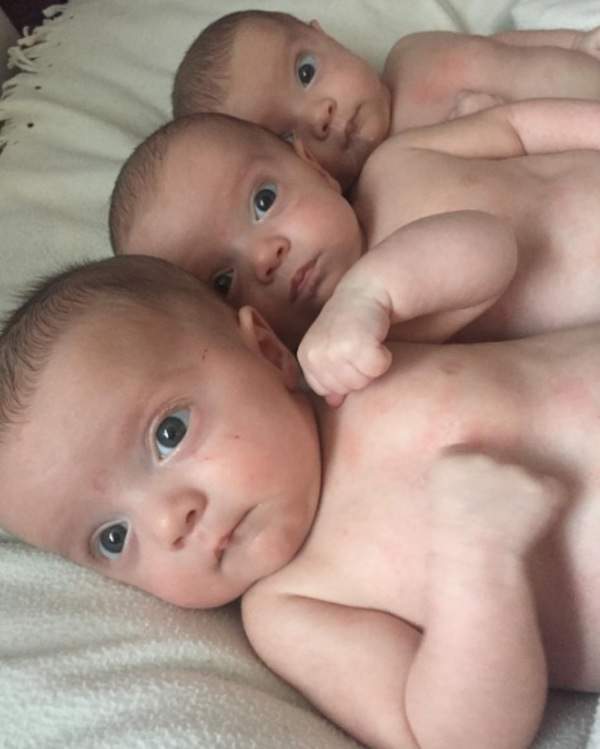
As the months passed, the three boys thrived. They gained weight, met milestones, and filled the house with the kind of chaos only triplets can bring. Neighbors joked about the endless supply of strollers, car seats, and tiny clothes.
By the time they turned toddlers, each had carved out his own personality. Roman was the curious explorer, Rohan the cuddly charmer, and Rocco the determined problem-solver. They might have looked like mirror images, but they were no longer interchangeable—they were individuals.
When they turned seven, family photos showed three identical faces grinning at the camera, dressed alike but unmistakably unique in expression.
A Rare Miracle

Stories like Becki-Jo’s capture attention around the world because they are so rare. Identical triplets are not just a biological anomaly—they are living reminders of how unpredictable and miraculous life can be.
Doctors explained how it happened: one fertilized egg split into two, then one of those halves split again, all within the first ten days of pregnancy. Such timing is nearly impossible, which explains why only a handful of identical triplets are born worldwide each year.
For Becki-Jo, the science matters less than the love. “I just feel so grateful,” she often says. “They’re my miracle boys.”
The Challenge and the Gift
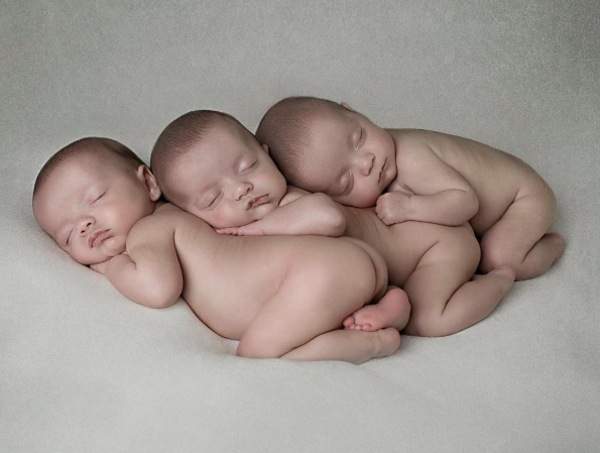
Raising three identical sons is not without its difficulties. Financially, the cost of diapers, formula, and clothing added up quickly. Physically, sleepless nights stretched into months. Emotionally, the responsibility sometimes felt overwhelming.
But Becki-Jo and her family embraced the chaos with humor and resilience. Friends recall her laughing as she loaded triple strollers into the car, or labeling baby bottles in color-coded sets to keep track.
And with every challenge came a reward: three sets of arms reaching for her, three giggles echoing in the living room, three unique souls who entered the world against the odds.
A Story That Inspires
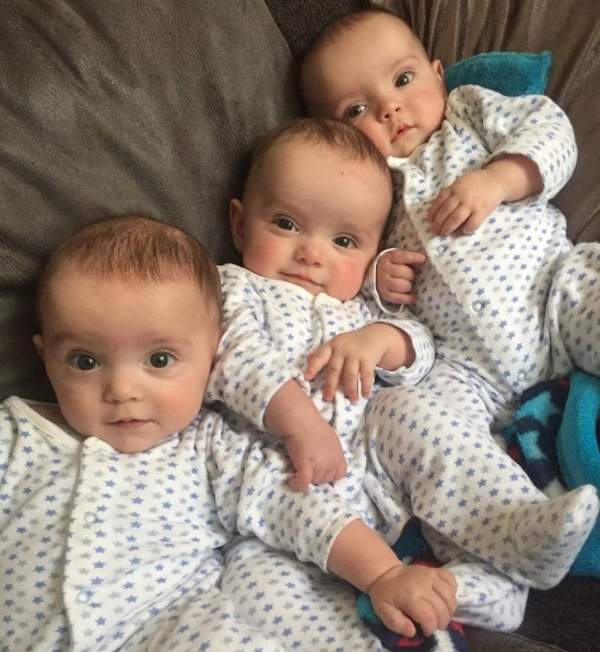
Today, when people hear about the Allen family, they’re often astonished by the rarity of their story. But beyond statistics and odds, what stands out is the way Becki-Jo and her family turned shock into strength, and surprise into joy.
Their story is a reminder that life doesn’t always follow the script we expect. Sometimes, it hands us something overwhelming. And sometimes, what feels overwhelming at first becomes the most precious gift imaginable.
Conclusion: Three Miracles, One Family

When Becki-Jo first lay in the hospital, staring at an ultrasound screen, she couldn’t have imagined the journey ahead. Three identical boys—Rocco, Roman, and Rohan—would change her life forever.
Today, those boys are growing, thriving, and bringing endless laughter into their family’s home. Alongside their big sister Indiana, they are proof that miracles do happen, even when you least expect them.
What began with shock and uncertainty has blossomed into a story of resilience, love, and wonder. For Becki-Jo, her once-in-a-lifetime surprise is now her daily reality—a reality filled with joy, chaos, and immeasurable pride.
And for the rest of us, her story is a reminder: sometimes the rarest miracles are the ones that come in threes.
